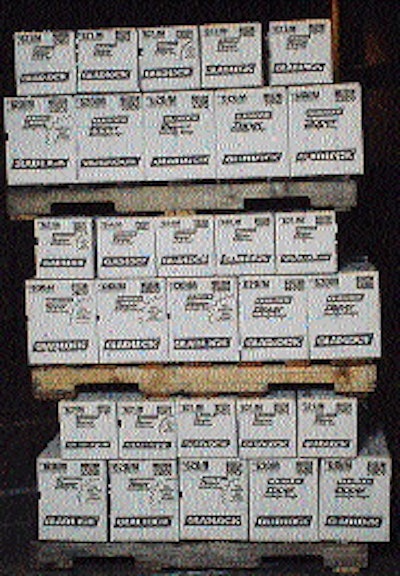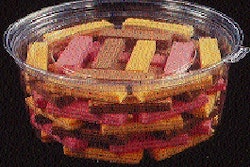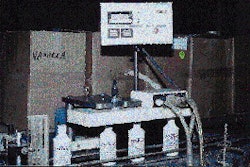As major retailers such as Wal-Mart, KMart, and grocery chains reduce inventories by ordering goods on a just-in-time basis, they force manufacturers to respond in kind. First Brands, the Danbury, CT-based supplier of home and institutional trash bags, automotive and pet care products, is doing just that.
First Brands still ships entire pallet loads containing the same product, but it has added the versatility of shipping a variety of products on the same pallet in a "mixed" load configuration. In many instances, First Brands must meet retailer requests to ship an order on a single pallet, even though the order may not be large enough to fill the pallet's footprint. First Brands also ships on pallets smaller than the traditional 48" x 40" size.
Early this year, First Brands became one of the first users of Cape® Systems' (Plano, TX) Display Pallet, a Windows(TM)-based software program that enables its Home Products Division "to more easily configure stacking patterns for cases of mixed product on a pallet," says John Roggow, manager of production, planning and inventory control.
"Prior to using this software, whenever we ran into multiple-product pallet loads, we had to determine stacking patterns manually to find the best configurations. So the first big savings it provided were in labor costs. They exceed 50%," he estimates. "The software has also given us the opportunity to double-stack pallets on trucks. We can't stack everything two-high on the delivery trucks, but it's something we didn't do at all in the past. That cuts our transportation costs by at least 30%."
First Brands began using the Cape Pack packaging analysis software system in 1993, upgrading this year to the current version, Cape Pack 95(TM), for more traditional pallet loads that include cases of the same product. Scott Peacock, then manager of packaging engineering, spearheaded First Brands' use of the software.
Display pallets
Presently, Home Products is the only division within the company using Cape's Display Pallet program. Products include all Glad® varieties and the reclosable Glad-Lock® storage bags in gallon, quart and sandwich sizes.
Peacock, who left the company in April, says the software has been instrumental in meeting the needs of demanding customers. "Retailers want to keep their inventories at low levels. They no longer want to pay for the warehouse space it takes to store a pallet load that may have 60 cases of a single product on it. They look at what's selling in their own store, then cherry-pick our products as they see fit.
"We'll send them a mixed pallet load with lower case quantities of various products. When I first started with First Brands nearly six years ago, we maybe designed two or three of these mixed loads in a year. Now it's nearly five a month. We may ship anywhere between 50 and 10ꯠ of each of these pallet configurations."
The division now uses Display Pallet for loads that will be shipped with boxes of bags stacked in trays, rather than in full corrugated boxes. Often the filled trays are "created" from full cases equipped with tearstrips. First Brand operators open the boxes with the "zipper" that is scored and cut into the case blank. The tray-packed products simplify display for the retailer and save on store labor.
The software program assists in determining pallet patterns for these loads, and it also suggests whether corrugated pads, spacers, top and end caps might be helpful in protecting the load during shipment.
"Right now, these tear-strip cases represent only about 5% of our business," notes Roggow. "But it's a growing segment."
Senior packaging engineer Paul Capponi uses Display Pallet for cases ranging from 10" to 18" L, 8" to 14" W and 6" to 12" D.
"The Display Pallet software is simple to use," says Peacock, who tutored Capponi on the system. "You enter case dimensions and products into the database and create your own definitions, providing the number of cases of each item you want on the pallet. The system is very visual. It uses different colors. It lets you build the pallet one case at a time, rotate the pallet, draw in corner posts or top caps and view the pallet from any side. Once you provide the parameters, the software does computations in seconds that provide a variety of options to get the most cost-effective solution."


























